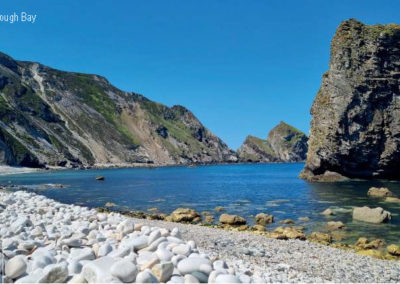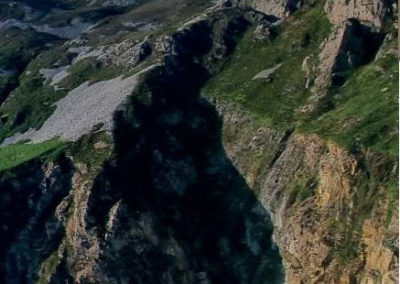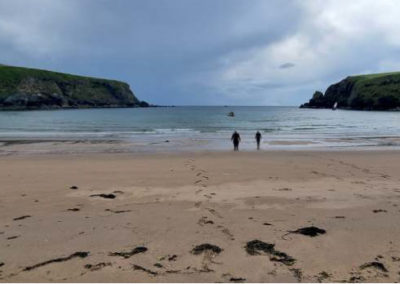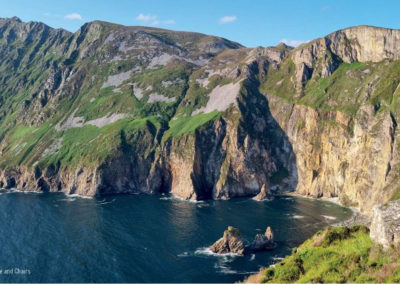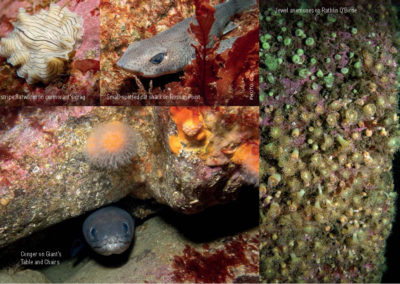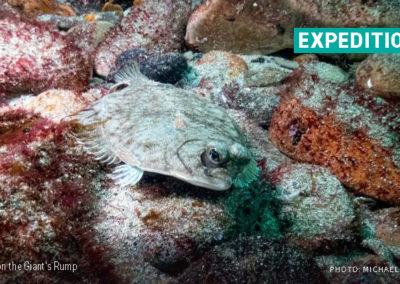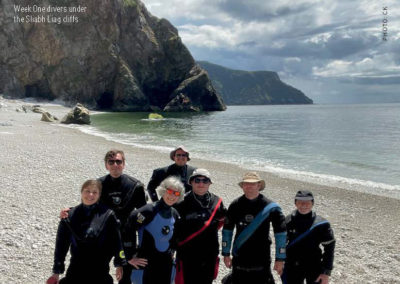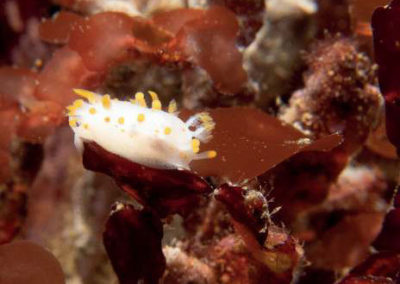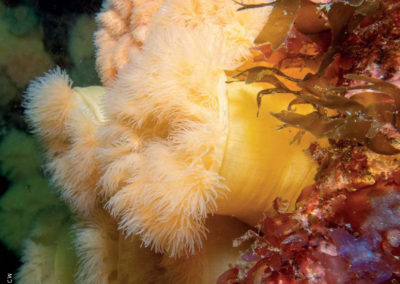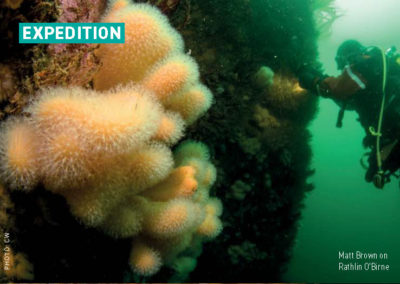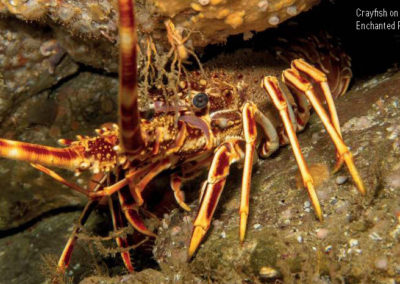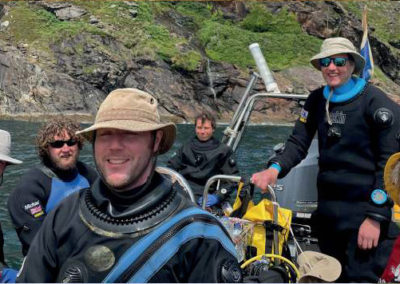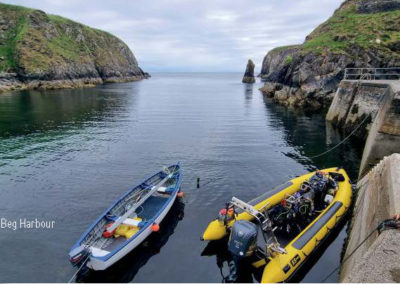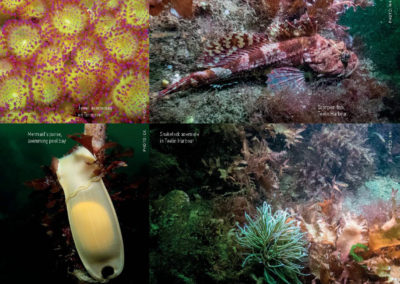One of the things I enjoy most about diving is the sense of exploration.
Exploration in diving is often associated with deep wrecks, but there are other ways to explore and dive somewhere few, if any, have dived before. In search of adventure, in June 2023 I went with 16 members of Clidive (BSAC branch 410) to the beautiful rural village of Teelin in County Donegal, Ireland.
We discovered fantastic diving that exceeded even the stunning beauty above the surface. If your club doesn’t run expeditions like this, I’m hoping to convince you that it’s well worth the effort, and if you do run expeditions, that Teelin should be on your radar!
The Wild Atlantic Way
Teelin was suggested as a base by Peter McCamley of Gas Technologies, who rent out compressors to us for our expeditions. He trains new divers and dives deeper wrecks from there and is very enthusiastic about the high quality of diving and ease of logistics. It turns out he was right.
Clidive is based in central London so we have no option but to travel for our diving. We own two well-equipped RIBs, and the majority of our training and diving is from these. This regular practice in a variety of locations teaches and keeps fresh the skills required to do more adventurous expeditions.
We took one boat, our 7-metre, 225hp RIB. It was an easy tow via the Liverpool to Belfast overnight ferry, with a good sleep in a cabin, and a hearty truckers’ dinner and breakfast. We took our dive kit with the boat, allowing the majority of the group to fly via Derry.
Teelin is in a famously beautiful part of north-west Ireland. It’s part of the Gaeltacht, so Gaelic is the main language there. It’s best known for the Sliabh Liag sea cliffs, the second highest in Europe and they are really quite a sight. We rented two cottages in the village, a short drive from the pier. We were blown away with the spectacular ruggedness of the nature on the Wild Atlantic Way. Stepping out of our cottage in the morning to views of rolling countryside and far off cliff faces was simply unforgettable.
We were split into two groups over the two weeks. Week one was responsible for getting the boat there and launching and week two for recovering and returning it. Everyone played their part; we all took turns at cooking, making lunch, pumping cylinders and fuelling boats. Each week had its own feel and very different weather, but both had great camaraderie and diving.
Diving and geography
Teelin is on the north side of Donegal Bay. Above the water, most of the coastline is composed of steep cliffs with large boulders at the bottom. We soon found this was true under the water too.
The diving was reminiscent of both the exposed Atlantic end of Cornwall and the exposed west coast of Scotland – it had the jewel anemone-encrusted walls of Cornwall and the ruggedness of Scotland.
We dived the coast west of Teelin. There were some uncharted rocks, but generally we could be almost touching the cliff walls and still have 30m of water below us. There appeared to be no currents in the area, so we had no need to be concerned about slack. We found current only on two occasions – neither was strong and neither seemed to tally with other experiences, so might well have just been an expression of heavy weather.
I could only find one local guidebook, Underwater Ireland, which covered a handful of sites. Peter and a knowledgeable local skipper, Paddy Byrne, provided us with a few sites, but the majority we dived were chosen from interesting looking areas on the charts.
We stayed out all day on the boat and visited a number of lunch spots including:
■ A stunning small beach under the 600m cliffs, which was only accessible by boat
■ Malin Beg beach, a beautiful sandy beach just about accessible by tourists but empty when we were there
■ Malin Beg harbour, a quaint and sheltered fishing harbour with friendly local fishermen who told us an interesting story about the navy blowing up a sea stack with gelignite
■ Glenlough Bay, which was really only accessibly by boat – and even then, only for people prepared to swim in!
Diving and geography
Teelin is on the north side of Donegal Bay. Above the water, most of the coastline is composed of steep cliffs with large boulders at the bottom. We soon found this was true under the water too.
The diving was reminiscent of both the exposed Atlantic end of Cornwall and the exposed west coast of Scotland – it had the jewel anemone-encrusted walls of Cornwall and the ruggedness of Scotland.
We dived the coast west of Teelin. There were some uncharted rocks, but generally we could be almost touching the cliff walls and still have 30m of water below us. There appeared to be no currents in the area, so we had no need to be concerned about slack. We found current only on two occasions – neither was strong and neither seemed to tally with other experiences, so might well have just been an expression of heavy weather.
I could only find one local guidebook, Underwater Ireland, which covered a handful of sites. Peter and a knowledgeable local skipper, Paddy Byrne, provided us with a few sites, but the majority we dived were chosen from interesting looking areas on the charts.
We stayed out all day on the boat and visited a number of lunch spots including:
■ A stunning small beach under the 600m cliffs, which was only accessible by boat
■ Malin Beg beach, a beautiful sandy beach just about accessible by tourists but empty when we were there
■ Malin Beg harbour, a quaint and sheltered fishing harbour with friendly local fishermen who told us an interesting story about the navy blowing up a sea stack with gelignite
■ Glenlough Bay, which was really only accessibly by boat – and even then, only for people prepared to swim in!
Exploring under the cliffs
Heading west from Teelin, the first area we explored was under the dramatic cliffs of the Sliabh Liag. As we slipped beneath the water we were greeted with a stunning sight – walls covered in jewel anemones and dead men’s fingers plunging to 30m; we explored large boulders that were home to conger, lobster, crab, many different wrasse and more. As we swam around, marvelling at the wide array of life in this beautiful setting, there were large silver pollock hanging around at the extremes of vision, keeping an eye on proceedings.
Visibility was great and the white gravel at the bottom reflected the sun. As our bottom time slipped away, we shallowed out to eke everything we could from the dive. The kelp line was about 20m and we saw a huge range of nudibranchs and flatworms among the other shallow life as we ever-so-slowly ascended.
Under the cliffs, the sites we visited were:
■ Carrigan Head, diveable in fairly strong westerlies and stronger north-westerlies
■ Giant’s Table and Chairs, named for what it looks like from the cliffs
■ Cormorant’s Crag, a stunning shard at the bottom of the cliff that has a lot of cormorants on it
■ Giant’s Rump, which we dived in heavier north-westerlies by staying in the lee
■ Gloster Rock, which is more exposed and has even more life.
These dramatic dives suited their windswept and exposed locations and had us thirsting for more, so we decided to keep exploring along the coast to see what else it had in store.
Out of Donegal Bay
Outside of Donegal Bay the sites were more exposed and deeper so had an even more substantial profusion of life. The sharply angled cliffs and sea stacks show the full impact of the Atlantic. The dives we did here were in about 40m. We did two dives on Rathlin O’Birne island and three on steep walls at the base of the massive sea stacks that pepper this stretch of coast – Rossan Point, Tormore (Ireland’s highest sea stack) and Enchanted Rocks.
As they were more exposed, the walls were absolutely crammed with jewel, plumose and dahlia anemones. When we descended we reached the bottom of the wall to find beautiful boulders and gullies to glide through. As well as being mesmerised by the beauty of the underwater scenery in general, there were wrasse and smaller fish resident on the sites and you could feel the energy of the location. We saw crab and lobster, scorpion fish, a lot of dog fish, very large ballan wrasse, pollock, nudibranchs, and sea hares. On one dive a buddy pair was buzzed by a pair of dolphins, which we also saw at the surface.
Sheltered dives
With many of the dives being exposed to south westerlies, we also needed to find some more sheltered dives for when the weather wasn’t in our favour. Often these dives can be disappointing, but we found quite the opposite; if anything there was more life than on the exposed walls. We had lots of crayfish, ling and wrasse. We found mermaid’s purses and squid eggs. There were also flat fish, john dory, shoals of juvenile fish, prawns, rays, lobster, crabs, scallops, snakelocks anemones, scorpion fish, blennies, pipe fish, pollock, angler fish and more. All of these dives were fantastic in their own right.
One sheltered area we dived was Swimming Pool Bay, which is protected from most weather except southerlies and has two main areas to dive – rocks on its east and a wall on its west – both descending to 25-30m. Both sides have their own character and both were thronging with life and we were particularly excited to see a john dory here on a couple of dives.
One day when there was a heavy southerly and we were unsure we’d be able to get a dive in, Paddy stepped in to tell us that there was a very good dive in Teelin Bay itself. He told us that he’d seen divers come out of there with eyes like dinner plates, as they’d seen so much life. He certainly knew what he was talking about! It turned out to be a fantastic dive, especially at about 25m where the sloping boulder wall meets the sandy bottom. It’s a large enough area that you can cover different sections of it on different dives – we did just that, and were delighted with it.
The other sheltered area we dived was Malin Beg harbour. We dived a wall on the western approaches, which dropped to 30m. It was a dramatic dive, bursting with life, with large gullies to explore, making it clear that other sites in the harbour would also be well worth checking out. One pair on this dive saw a crayfish so fat that it seemed to have become wedged in its hole!
Conclusions and recommendations
Conclusions and recommendations
Teelin was a stunning place to dive in every way, and logistically quite straightforward. The diving was on a par with, but subtly different from other Atlantic west-coast options like Cornwall or west Scotland and has great diving in pretty much any weather. With our boat we got about very easily to a wide range of sites. There are also options to pull the boat out and launch closer to other dive spots.
For me, expeditions like this are the reason to build up and maintain the ability to be self-sufficient within a club – often it’s the only way to visit wild places. In addition to taking you to amazing places like Teelin, self-sufficient expeditions give everyone the opportunity to play their part, increasing all participants’ skills and self- confidence.
On a future trip, it would be great to explore even further round the coast to the north, particularly Aran Island and beyond. I’d also like to have a look at some of the sites east, especially the Ogano wreck. This is definitely a place to return to and continue our exploration!

